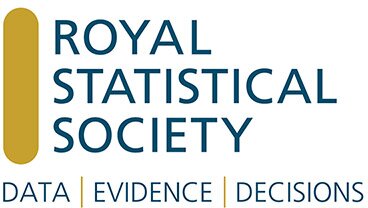Unveiling the Art of Effective Data Presentation in Mathematical Research
Welcome to the fascinating world of data presentation in mathematical research papers! In this extensive guide, we're diving deep into the art of communicating complex mathematical data in a clear and compelling manner. Data presentation is not just about numbers and graphs; it's about conveying your research effectively to your readers. So, let's embark on this journey together, starting with the basics.
Background and Importance of Data Presentation
Have you ever wondered why data presentation is crucial in mathematical research? Well, consider this: imagine you've spent months crunching numbers and deriving groundbreaking results. But if your presentation falls flat, your hard work might as well be hidden in a black hole of unread research. In this section, we'll uncover the significance of presenting data effectively and its impact on your research.
Now that you understand the importance, what can you expect from this article? We'll equip you with the knowledge and tools needed to present your mathematical data like a pro. We'll equip you with the knowledge and tools needed to present your mathematical data like a pro. From understanding your data to avoiding common pitfalls and exploring real-world examples, we've got you covered with powerpoint presentation homework help.
Understanding Your Data
Before you can present data effectively, you need to understand it intimately. This chapter takes you on a journey through the various types of data encountered in mathematical research. Are you dealing with continuous or discrete data? Is it categorical or ordinal? We'll unravel the mysteries and complexities, helping you grasp the essence of your data.
-
Types of Data in Mathematical Research
Mathematical research can involve various types of data, from numerical values to complex equations. But fear not! We'll break it down into manageable chunks, helping you understand your data's nature and characteristics. Are you dealing with continuous or discrete data? Is it categorical or ordinal? Knowing this is crucial for selecting the right presentation methods.
-
Data Collection and Organization
Imagine you're baking a cake. Before you start, you need to gather the ingredients and arrange them neatly. Similarly, collecting and organizing your data is the first step in data presentation. We'll discuss best practices for data collection and share some tricks to keep your data organized like a well-structured recipe.
-
Data Preprocessing and Cleaning
Ever tried making a delicious meal with spoiled ingredients? Data preprocessing is like cleaning and preparing your ingredients. We'll explore techniques for handling missing data, outliers, and noise. Plus, we'll discuss the importance of data normalization and transformation.
Choosing the Right Visualization
Once you're familiar with your data, the next step is to choose the right visualization method. Just like a painter selects the perfect brush, you'll learn how to pick the most suitable visualization technique to bring your data to life. In this chapter, we'll journey through the world of graphs, charts, and tables, discussing when and how to use each method effectively. It's all about selecting the right "tool" for the job.
Graphs, Charts, and Tables
Here comes the fun part! It's time to choose the right visual representation for your data. We'll explore the world of graphs, charts, and tables, discussing when to use each and how to decide. Are you ready to bring your data to life?
Selecting the Appropriate Visualization Method
Just like a master chef selects the perfect utensil for a particular dish, you'll learn how to pick the most suitable visualization method for your data. Bar charts, scatter plots, pie charts – we'll cover them all, helping you make informed choices.
Effective Use of Color and Labels
Ever seen a rainbow salad? Neither have we! Just as too many colors can ruin a dish, overloading your visualizations with colors can confuse your audience. We'll guide you on how to use colors judiciously to convey information effectively. Labels, on the other hand, are like the seasoning of your dish – they add flavor and context.
Creating Clear and Informative Graphs
In the previous chapter, we explored the art of selecting the right visualization method. Now, it's time to master the craft of creating clear and informative graphs. In this chapter, we'll dive into the fundamentals of graphing, dissect common types of graphs in mathematical research, and provide you with guidelines for plotting data that ensures your graphs are not only accurate but also visually appealing. Get ready to turn your data into captivating visuals.
-
Introduction to Graphing
Now, let's roll up our sleeves and start graphing! Whether you're a newbie or a seasoned pro, this section will provide you with valuable insights. We'll discuss the fundamentals of graphing and its role in mathematical research.
-
Common Types of Graphs in Mathematical Research
Line graphs, bar graphs, and histograms, oh my! We'll explore the most common types of graphs used in mathematical research. With real-world examples, you'll learn when to use each type to convey your message effectively.
-
Guidelines for Plotting Data
Ever heard the saying, "Measure twice, cut once"? Plotting data is no different. We'll share guidelines to ensure your graphs are accurate, clear, and visually appealing. Plus, we'll discuss axis scaling and labeling techniques.
-
Examples and Best Practices
What better way to learn than from real examples? We'll showcase some exemplary graphs from published research papers and dissect them to highlight best practices. Get ready to be inspired!
Designing Effective Tables
Tables, often overlooked but incredibly useful, play a vital role in data presentation. In this chapter, we'll discuss when and how to use tables effectively in mathematical research. We'll also explore the art of formatting and styling tables, making them visually appealing and easy to digest. Just like a well-set dining table enhances the dining experience, well-designed tables enhance your data presentation.
When to Use Tables
Tables are like the classic comfort food of data presentation. We'll explore when to use tables to convey information efficiently. Sometimes, simplicity is the key!
Formatting and Styling Tables
Just like a well-set dining table, a well-formatted table can enhance the dining experience. We'll discuss formatting and styling tips to make your tables visually appealing and easy to read.
Captions and Labels for Tables
Ever tried a dish with no name or description? Not very appealing, is it? We'll teach you how to add captions and labels to your tables, making them informative and user-friendly.
Also learn more about the rich history of the RSC here.
Explaining Your Visualizations
Your visualizations are like dishes at a gourmet restaurant, and they deserve proper introductions. In this chapter, we'll explore the importance of incorporating captions, titles, and descriptive text into your visualizations. Just as a chef describes the flavors and ingredients of a dish, you'll learn how to guide your readers through your data-driven creations.
Incorporating Captions and Titles
A picture may be worth a thousand words, but a well-crafted caption or title can add depth and clarity. Learn how to create captivating captions and titles for your visualizations.
Adding Descriptive Text
Imagine describing the flavors of a gourmet meal to a friend. Adding descriptive text to your visualizations is like guiding your readers through a culinary journey. We'll show you how to craft compelling descriptions.
Interpreting Data Trends
Ever been to a wine tasting and wondered about the subtle notes in each sip? Interpreting data trends is similar – it's about uncovering the hidden flavors in your data. We'll guide you on how to analyze and explain the trends you observe.
Avoiding Common Mistakes
To become a master of data presentation, one must navigate the treacherous waters of common mistakes. In this chapter, we'll highlight the pitfalls to avoid, such as data misrepresentation, misleading visualizations, and the perils of overcomplicated graphs. It's your roadmap to steering clear of the traps that can sabotage your data presentation.
Data Misrepresentation
Misrepresenting data is like serving a cake with a misleading appearance. We'll highlight common pitfalls, such as distorted scales or truncated axes, and how to avoid them.
Misleading Visualizations
Have you ever fallen for an optical illusion? Misleading visualizations can have the same effect on your audience. We'll explore tricks that can unintentionally deceive and how to steer clear of them.
Overcomplicated Graphs
Ever tried a dish with too many ingredients? Overcomplicated graphs can overwhelm your readers. We'll discuss the importance of simplicity and clarity in your visualizations.
Tools and Software for Data Presentation
In today's digital age, there's a wide array of tools and software available to aid in data presentation. In this chapter, we'll provide an overview of software options, from the familiar Excel to specialized data visualization tools. We'll also guide you to tutorials and resources that will help you harness the power of these tools effectively.
Overview of Software Options
Ready to embrace the digital age? We'll provide an overview of software options for creating stunning data presentations. From Excel to specialized data visualization tools, we've got recommendations to suit your needs.
Tutorials and Resources
No one becomes a master chef overnight, and the same goes for data presentation. We'll point you to valuable tutorials and resources to hone your skills. Let's turn you into a data presentation maestro!
Peer Review and Feedback
Even seasoned chefs seek input from fellow experts to refine their creations. In this chapter, we'll discuss the importance of seeking input from peers and mentors in the realm of mathematical research. Furthermore, we'll explore how to incorporate feedback effectively, ensuring continuous improvement in your data presentation skills.
Seeking Input from Peers and Mentors
Even top chefs consult with fellow culinary experts. We'll discuss the importance of seeking input from peers and mentors to refine your data presentation skills.
Incorporating Feedback for Improvement
Remember, even the best dishes can be enhanced with a pinch of feedback. We'll guide you on how to incorporate feedback effectively and continually improve your data presentation prowess.
Conclusion
Finally, let's reflect on the pivotal role of effective data presentation in the world of mathematical research. Just as a beautifully presented dish can elevate a dining experience, clear and engaging data presentation can elevate the impact of your research.
So, sharpen your knives (or pencils), embrace your inner data artist, and embark on your journey to becoming a data presentation maestro in the world of mathematical research.
Sponsors













Description
The RSC is an annual conference that is organised by students, for students, and open to PhD students or equivalent in any field relating to probability or statistics. The next conference will take place 24-27th July 2018 at the University of Sheffield.
Get in touch
Email:
Facebook